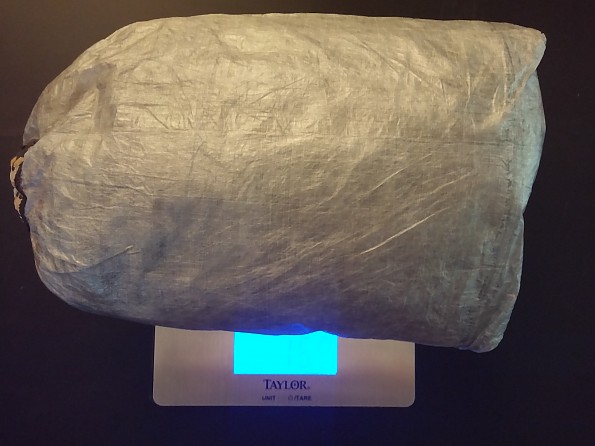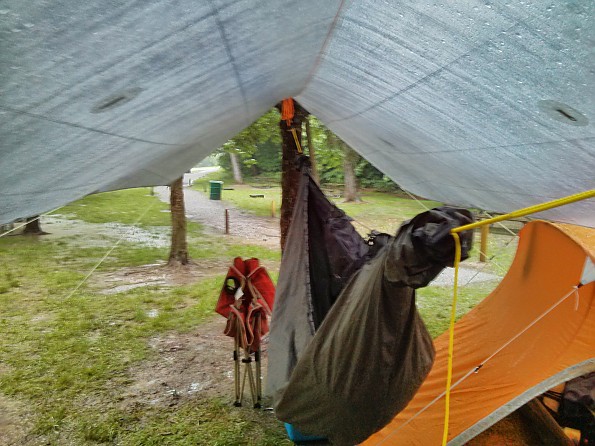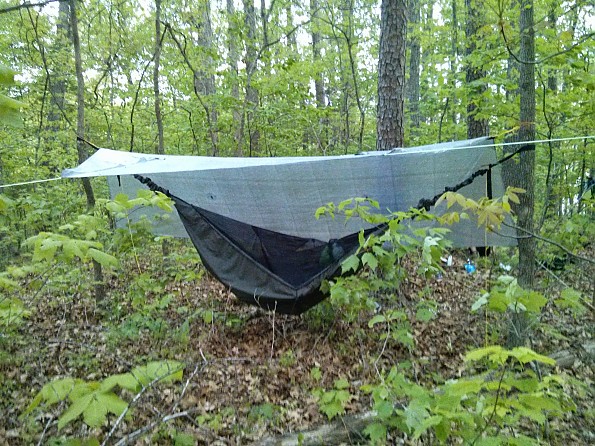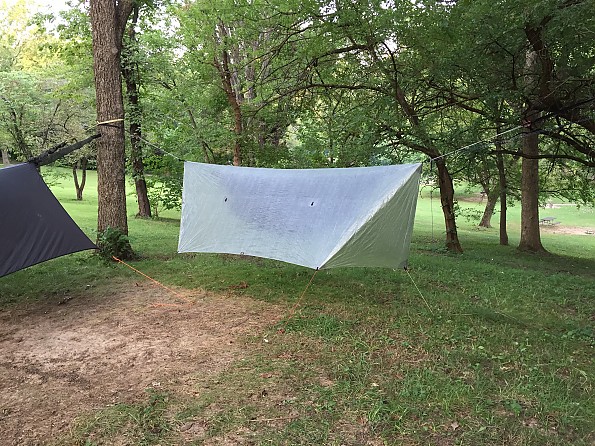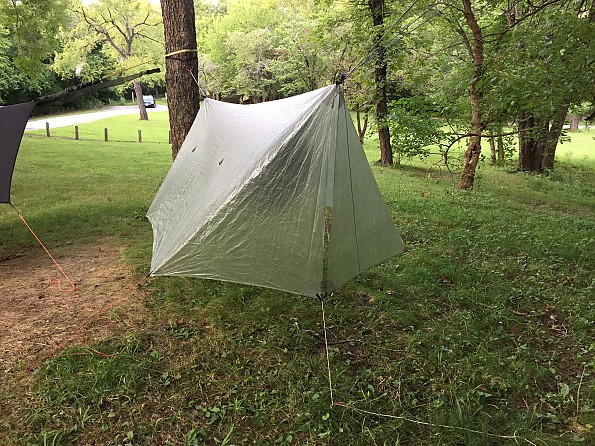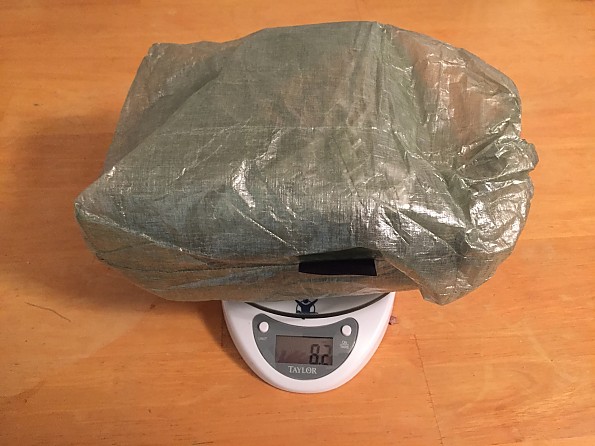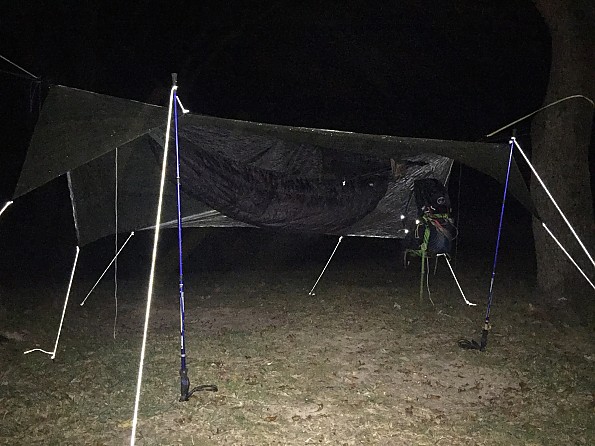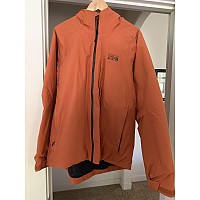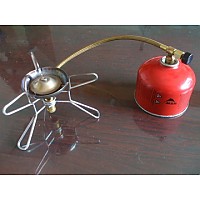Hammock Gear Dyneema Fiber Standard Tarp with Doors
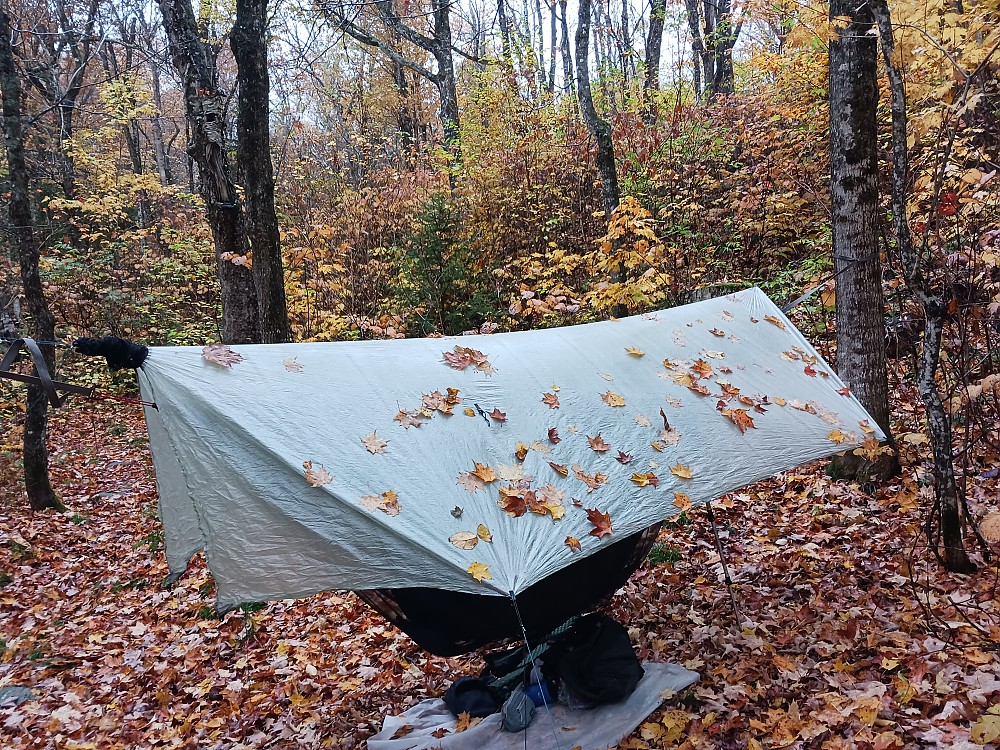
The Hammock Gear Dyneema Fiber Standard Tarp with Doors combines UL materials with great design and construction to create an all-season shelter of a minimalist nature.
Pros
- Light
- Durable
- Functional
Cons
- Pricey
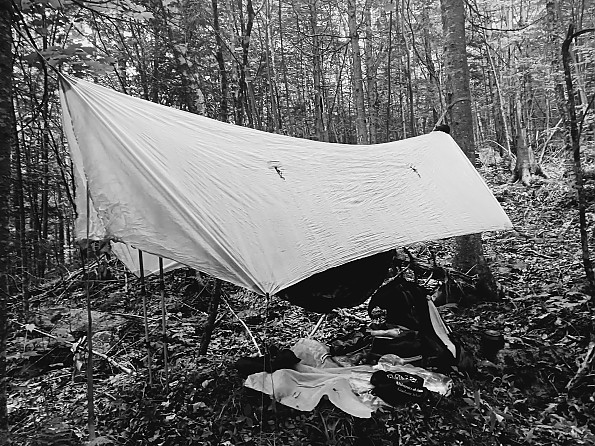
I have long been a fan of Hammock Gear's Econ line of quilts and own several of their other tarps including the Hammock Gear Journey . After coveting one of their dyneema models for years I finally took the financial hit and ordered one of their Standard Tarp with Doors three years ago. I guess it is well tested enough for a review by now heh.
Construction & Materials:
Hammock Gear (HG going forward) offers a choice of .50 oz/yd² Green Dyneema® Composite or .60 oz/yd² Camo Dyneema® Composite. The "Green" as you will see in the pics and video isn't very green. It is really somewhere between white and clear depending on lighting.
The Dynmeema Standard Tarp with Doors can be ordered in 11' and 12' ridgeline sizes. Pics and video are of the 11' model. HG lists the weight as 7.28oz for the 11' model.
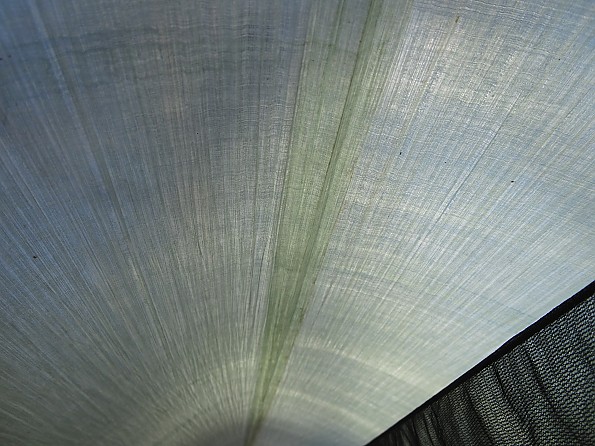
HG constructs their tarps here in the US by joining dyneema panels via what appears to be magic. The video below has a good view of the side panel construction and the ridgeline seam, but I use the word magic because of the smooth feel and how the side seams are almost invisible.
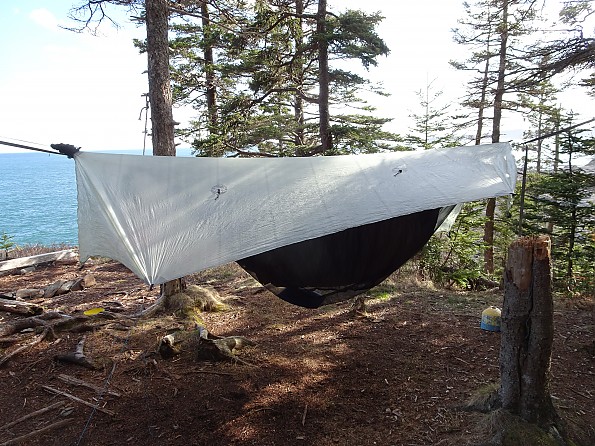
This pic gives you a view of the side panel seams if you have sharp eyes. There is rolled seam stitching around the borders of the material for support.
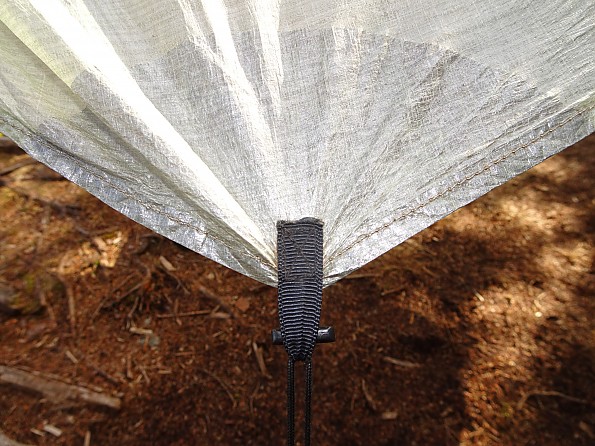
Features:
As seen just above there are two stake out points on each side of the tarp. Despite being a custom ordered item HG doesn't allow for a third tie out point to be added.
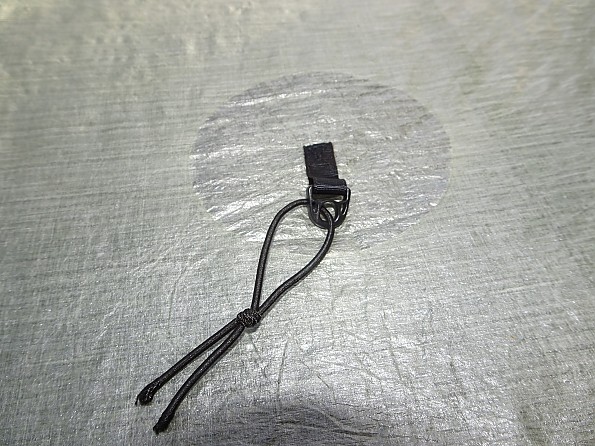
Each side of the tarp has two tie out points. These use a large support disc of dyneema bonded to the main panels in addition to the stitched grosgrain. HG does offer a door tie back option now that wasn't available when I ordered. I use a bit of cord and these points to tie the doors open if desired. For those who don't want the tie outs HG says they can't be removed when ordering so learn to love them heh.
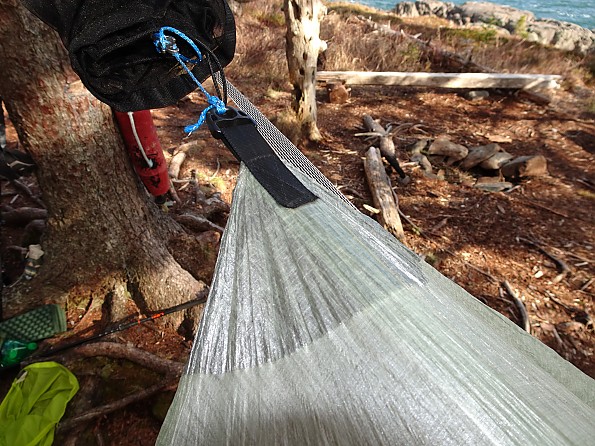
Rigeline tie outs are well supported which is important on a dyneema tarp. While shock cord is recommended for stakes to give the tarp a break the ridgeline needs to be taut so handles a bit of strain on the ends.
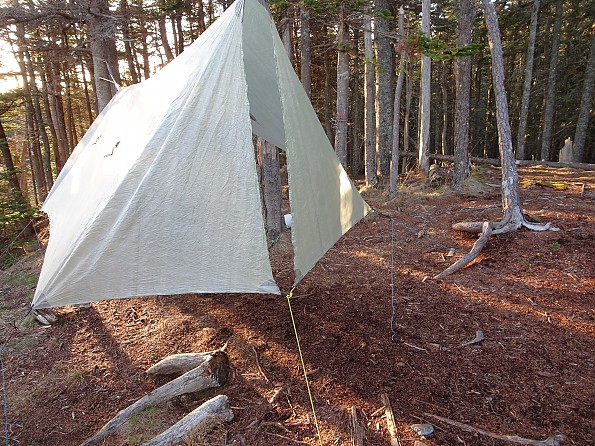
The doors don't close tightly even if tied or clipped together at the bottom. This allows some ventilation which is usually appreciated since dyneema doesn't breath. Some folks will add velcro tabs or other methods to seal the doors tightly, especially Winter users.
Packabilty & Storage:
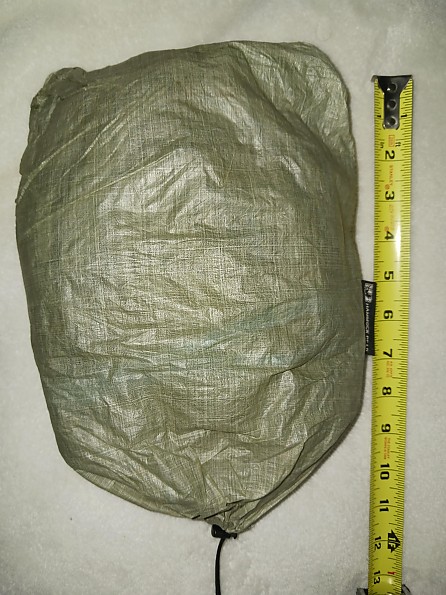
Many folks find packing and carrying dyneema shelters to be annoying, but I have found a fast, simple method of rolling this tarp into an easy to carry package. Using an HG Mesh Tarp Sleeve I just roll it up, pull the sleeve over it and then roll that up. It all fits into the package you see above. Watch this quick video if you want to see the entire process.
Weather Resistance & Ventilation:
Dyneema has a huge advantage over many other tarp materials in that it will not wet out. I have sat through a 36-hour rain storm in the Mahoosucs and the campsite may have flooded out, but the tarp held just fine. With a silnylon or even silpoly tarp I would have had to get out and tighten my lines as the tarp sagged, but the dyneema let me relax and enjoy the rain.
I did have issues with my breath condensing on the tarp right over my head. About 24 hours into this hang I found drops of moisture landing on the bug net over my head. At first I was terrified that my expensive tarp had a leak. Then I realized it was just me breathing hard while reading Poe all day heh.
Conclusions:
I held off on this purchase for a long time for several reasons. Spending so much money on an item is hard when you worry that it won't last or be worth the investment. My only regret is not buying this tarp sooner heh. It allowed me to drop 11 ounces compared to the silpoly tarp I had used prior.
The last few years I've been doing some long distance hiking for a couple of months at a time. It is on the longer trips where I really appreciate the simplicity and the function of HG's Dyneema Standard Tarp with Doors. There is a certain rhythm to making and breaking camp on a long trail. I love how fast I can take care of business with this tarp whether setting up or packing it away.
Camping under it is a real joy. The Longhos Loop in '23 was plagued by near constant rain; 45 of 57 days were wet at some point. On that trip I learned that if I stacked my gear under me before I got in the hammock I could do everything else I needed without getting out of bed. Cooking and eating dinner, toweling off and changing clothes...whatever the task, I was out of the rain and happy about it. Unless the wind is blowing the rain sideways there is a lot of defended space under this tarp despite its low weight and small size.

Would I recommend this tarp to others? Yes, but... The cost can't be ignored so I'd say a buyer has to consider how they would use it. For the type of backpacking and camping I was doing ten years ago I'm not sure it would be worth the investment. For the type of backpacking I'm doing now, especially the long miles involved, I think it makes sense to invest in the weight savings. 11 ounces is a lot of cheese!
Background
I've been tarp camping with a hammock or bug net of some sort for many many years. I've used cheap plastic, silnylon, silpoly and am old enough to have camped under canvas long long ago heh. This tarp has been used for three years and counting.
Source: bought it new
Price Paid: $353.25+tax $395 current price
Ultra light, ultra coverage that even wind driven sideways rain can't penetrate!
Pros
- Ultra light
- No stretch pitch
- Repair kit included
- Massive coverage
- Multiple pitch options
- Included 8.5" x 13.5" cuben stuff sack
- Catenary cut
- Packs small
Cons
- Expensive
- High cost
- Lost of money
I've been camping all my life, so I know what it is like to sleep in a tent...on the ground, on a cot, on a ground pad. Then I discovered that hammocks weren't just for the backyard. Then I discovered they're lighter than most backpacking tents. And that they don't offer much protection from the elements by themselves.
Step in the myriad tarps used with hammocks. Sure, you could use a typical fiberglass tarp from your favorite big box store — but do you want to pack that weight or bulk?
That is one of the great things about cuben fiber items, you can't get much lighter and they pack smaller than comparable sized items made of other material. The Standard Cuben Fiber Tarp with Doors from HammockGear fits a bill for going as light as you can go in a 4-season tarp.
I purchased the option to have a 12' ridge line so that I can use the tarp in a wider array of applications than just my hammock. For instance, I have a 2-person bug net bivy that fits very well underneath with plenty of space to keep gear out of the elements as well as myself and a companion.
The tarp packs down very small — it fits in the included 8.5"x13.5" stuff sack with plenty of extra room. I'm using 10 - 8' poly cords for tie outs and 50' length of Zing-it for the ridgeline — all of it fits into the stuff sack and still has room for more. In the stuff sack with cordage it weighs just 16.8 oz. However, for that, opened out, there is approximately 80 sq ft of coverage. That makes a nice front porch or fully enclosed shelter.
The 10 side tie outs and 4 sidewall tie outs offer any number of options for pitching the tarp. Particularly 4 "doors" that allow 360 deg protection from weather when closed up. No rain or snow in here! Since it is cuben fiber, there will be virtually no stretch from wetness, helping to make sure a tight pitch every time and stays tight. The catenary cut sides will help make sure wind doesn't flap the tarp in high wind when pitched and so reduces noise — great for sleeping. With all this protection, it's perfect for obscene weather and has handled itself well in several rainstorms and wind driving downpour.
The ridgeline is bonded and does not leak. The seams are bonded and sewn at the tie out points. The tie outs are plastic d-rings and will accommodate small cordage.
The thing, though, about cuben fiber gear, is that it is not for the weak of stomach financially. You could easily purchase any number of lightweight shelters or shelter systems for the cost of the tarp alone. If it helps to swallow, the tarp is very well built. This was my first purchase from HammockGear, and I've since gone back for other gear based on the build quality. Winter hammocking, here I come!
Source: bought it new
Price Paid: $311
Super lightweight. No stretch. Packs small. Expensive.
Pros
- Very lightweight
- Low/No stretch
- Great coverage
- Packs small
Cons
- Expensive
- Translucent
- More stakes and cord
This is an incredible product for hammocks. It weighs just over 8 ounces without tie outs and included stuff sack. I use the sack as a waterproof bag for some down items.
The product is well made, for easy deployment its packed in no-see-um skins and kept in an exterior mesh pocket on the pack. I haven't had any abrasion issues or wear. You can buy a silnylon big tarp with doors for $150, but it's going to be heavy. This is the opposite of heavy, the weight savings is what sold me and keeps me using it every time I hang. Of course you have unparalleled coverage and wind protection.
It's taut when deployed, once up there is no need to adjust. No need for shock cords for your tie outs. No need for a continuous ridge line, either. Just tie off the ends.
It does have downsides, but the weight and tautness overcome them for my use. The material is translucent, so you're really going to notice when the sun comes up.
The fact that you're going to need four extra stakes for the doors and and probably 25 feet worth of tie outs adds some weight, and a minute or two extra to set it up is a consideration. I have used one tie out for each pair of doors and it closes pretty tight and allows me to open the "doors" easily. Quick setup variations can be figured out easily. After all, you did pay $300 or so for this thing, so you're probably pretty interested in getting the most out of it.
If I ever went somewhere (god forbid) that didn't have trees, I'm pretty confident it would make a great shelter with two trekking poles. Never had a condensation issue, but I would consider that more of a local weather factor than something due to the material. I have other wearable cuben fiber products, so I assume it breathes. Don't know for sure. I'm also not sure how well it will handle wine stains. I'm trying REALLY hard not to find out...
Source: bought it new
Price Paid: $300
Your Review
Where to Buy
You May Like
Specs
| Price |
MSRP: $395.00 Reviewers Paid: $300.00-$311.00 |
| Material |
Dyneema Composite (previously known as Cuben Fiber) |


